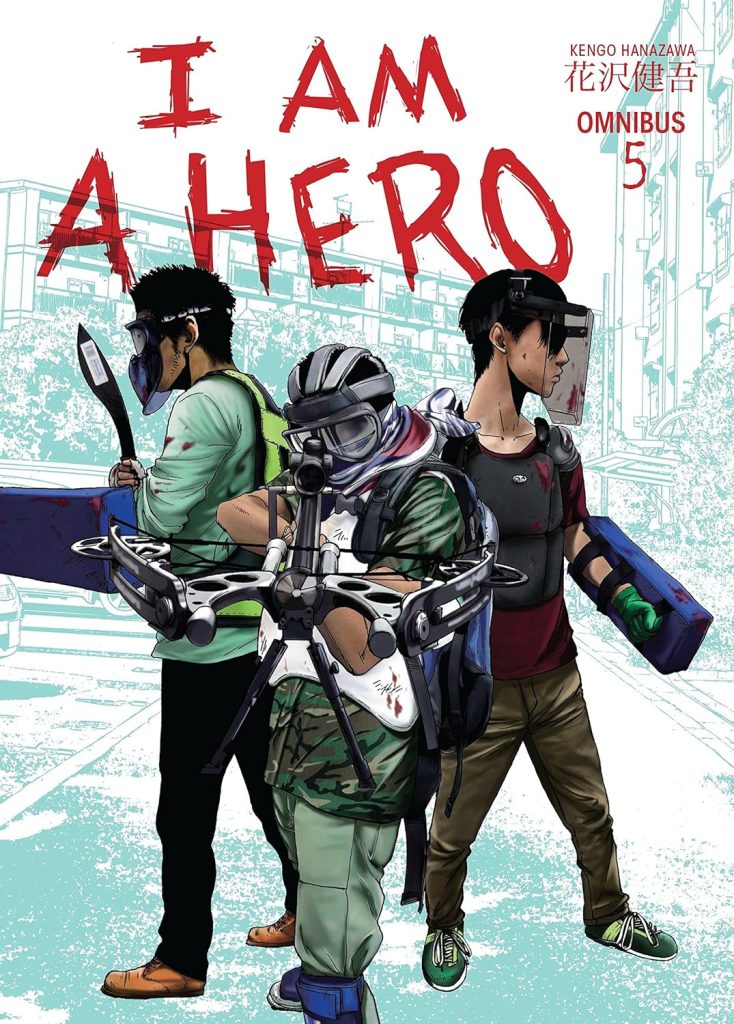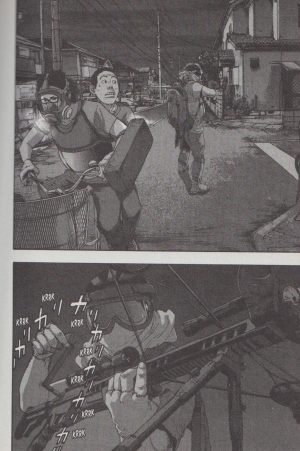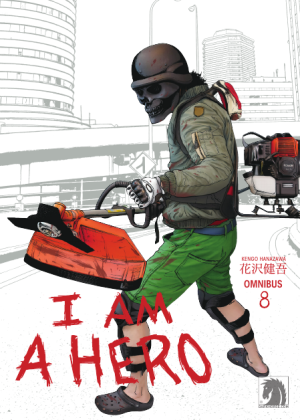Review by Frank Plowright
After four volumes the pattern is established for I Am A Hero of other characters coming and going despite the focus being exclusively on them at times, but the spotlight always returning to Hideo. The title is his self-comforting mantra after all. However, Kengo Hanazawa drops a surprise by opening this volume instead focussing on Kazuya Sada and Kaori from the manga studio that Hideo worked for in better times. In the days before the zombie outbreak they’ve been sent on a business trip to Taiwan, drawn by Hanazawa with the same obsessive detail applied to Japanese locations, and as soon as Kazuya announces he was bitten by a child we know there’s trouble ahead.
Omnibus 4 ended with Hideo, now being driven by Tsugumi Oda, a nurse who hates her first name, and still accompanied by Hiromi. When Hanazawa returns to them he keeps finding new ways to induce terror. Hideo, for instance, has to put his ear muffs on to protect his ears if he needs to use his shotgun, but seems oblivious to this also greatly impacting on his ability to hear the zombies moving. That, though, is as nothing compared to the horror he discovers.
Hideo’s social awkwardness isn’t defined, but is a constant backdrop. It’s already been shown that he’s not used to anything other than the most basic interaction with women, yet since the second volume he’s been accompanied by one most of the time. In Hiromi’s case before her transformation she was equally unsure and considerably younger than Hideo, but Tsugumi is older and not lacking in social skills. This leads to a fair number of interesting conversations as desperation means propriety goes out of the window when Tsugumi needs to urinate. Normally this would be a matter of stopping the car and heading for the trees, but as zombies may lurk among them it’s not a sensible option. This is a situation where Hanazawa’s tendency to prolong scenes works against him, as it almost fetishises the situation, not least because convention in Japan seems to dictate that even in an emergency the clothes stay on if there’s a possibility someone might be watching.
Another new form of horror is introduced before the end. Hiromi was shot with a nail gun, and the nail embedded in her head is gradually changing her perceptions of the world, which are always creatively drawn by Hanazawa. Tsugumi believes removing the nail is necessary, but the consequences can’t be predicted either.
That’s a plot carried over to Omnibus 6, as the final chapter looks at Takashi, the guy from the previous volume who’s been online. Like many others he’s isolated, uncertain and fearful, which leaves him open to exploitation. He’s certainly discomforted by the maniac that turns up on his doorstep only wearing underpants, but goes with these new allies into another plot to be followed up in Omnibus 6.
This is another fantastic volume with a new set of problems. The zombies provide the background threat, but it’s the ordinary people who provide the compulsive reading.





